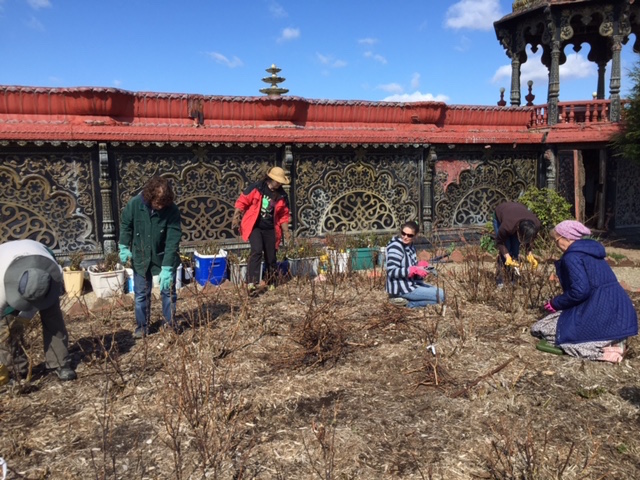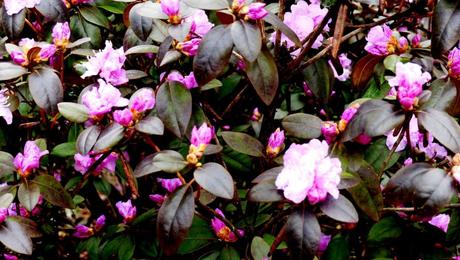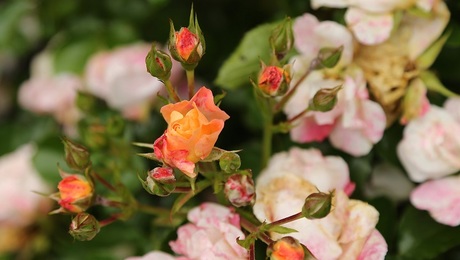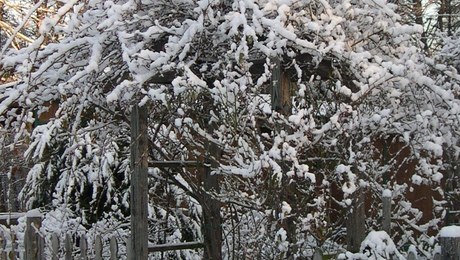
Photo/Illustration: Paul Zimmerman Roses
In the past their pruning practices has always been to cut the roses to about 6″ high in the fall and then mound mulch over them. It’s worked, but I was hoping we might be able to leave them taller and prune in spring. My idea of leaving them taller and then pruning taller in spring was to have fuller roses and therefore more blooms. As a first step we did the high potassium feeding I wrote about in a previous post late last fall. Then, instead of cutting the roses to 6″, they just cut them to about 3′ or so. We still mounded mulch over the bases just in a case.
Just in case happened! It was an odd winter in West Virginia and when I returned to the garden in early April to work with them at pruning time we were faced with a lot of dead canes above the ground. We had some master gardeners working with this and they reported widespread winter damage this past season all over the area so I know it wasn’t just us or because we tried something different.
As we pruned it became obvious the best thing to do was simply do what they normally did in the fall. Cut everything down to 6″ or less. We could see we had plenty of live growth emerging so the simple task here was to get the dead wood out of the way.

Photo/Illustration: Paul Zimmerman Roses
While this could have been a tragedy it wasn’t because we had always done a few things just in case a winter liked this happened. These are what I’d like to pass on to you.
1) Always, always bury the bud union when you plant roses. Because they had done that over the years of planting this garden everything below the soil level was alive and just waiting for spring to pop up. I’m sure we lost a few roses but not many. Bury it at least 2 inches deep.
2) Mound mulch over the base of the plants in fall to offer even further protection. It was quite interesting to see that in most cases the live growth extended to just above the mulch level.
3) Be prepared to punt! Gardening is not an exact thing from year to year. Nature often throws curve balls so roll with the punches.
4) If at first you don’t succeed you might not want to try again! Next year we are going back to their old practice of cutting the roses back hard in the fall. We tried something new, it didn’t work and so we go back to what did work.
As I’ve never really gardened in a true cold weather climate this has been a great hands on experience. Which leads me to point #5.
5) Just because you have a rose care book out and write the rose blog for Fine Gardening doesn’t mean you know everything and can’t still keep learning!!! 🙂
Happy Roseing
Paul

Photo/Illustration: paul Zimmerman Roses
Fine Gardening Recommended Products

A.M. Leonard Deluxe Soil Knife & Leather Sheath Combo
Fine Gardening receives a commission for items purchased through links on this site, including Amazon Associates and other affiliate advertising programs.


















Comments
-> < Earn fast money with your pay-pal while completing simple work from home from your computer... See more... >
Hi, I realize this is an old post, so you might not see my reply. I have only gingerly ventured into growing roses in my zone 6 - 7 southwest Missouri (read 'heat and humidity) in the past year or so. I planted "At Last" which has really exceeded my expectations, and bloomed all summer, nearly constantly. We've had a number of 'killing' frosts - into the mid 20's, and the bush is still leafy and green. It's the end of November - do I still cut it back to the 6 inches, or do I wait until there has been some sign of winter kill on the canes? Also, how deep should the mulch (I'm using light, dry horse barn compost) be? Does it just go over the crown of the plant or up against the canes as well?
Log in or create an account to post a comment.
Sign up Log in